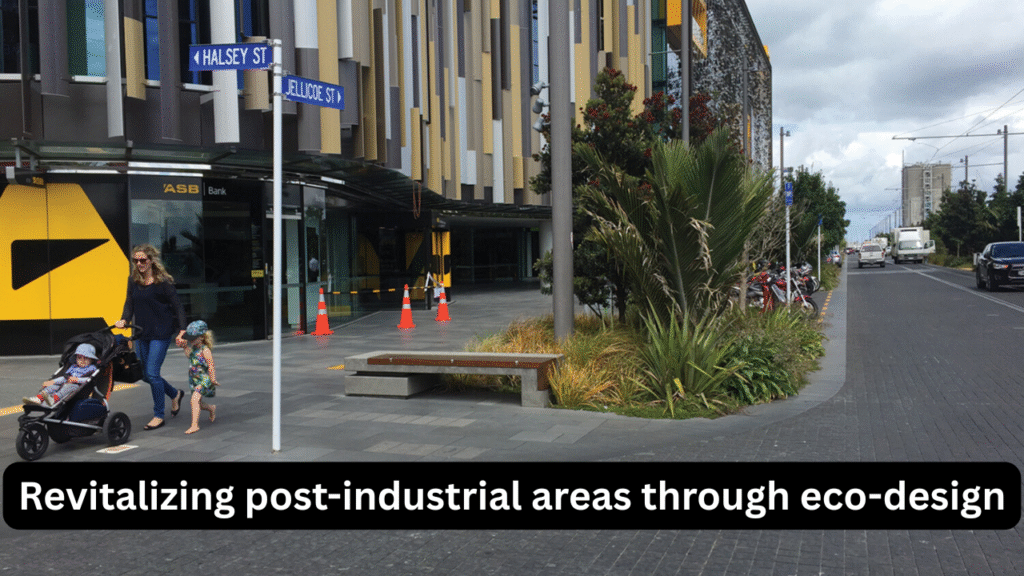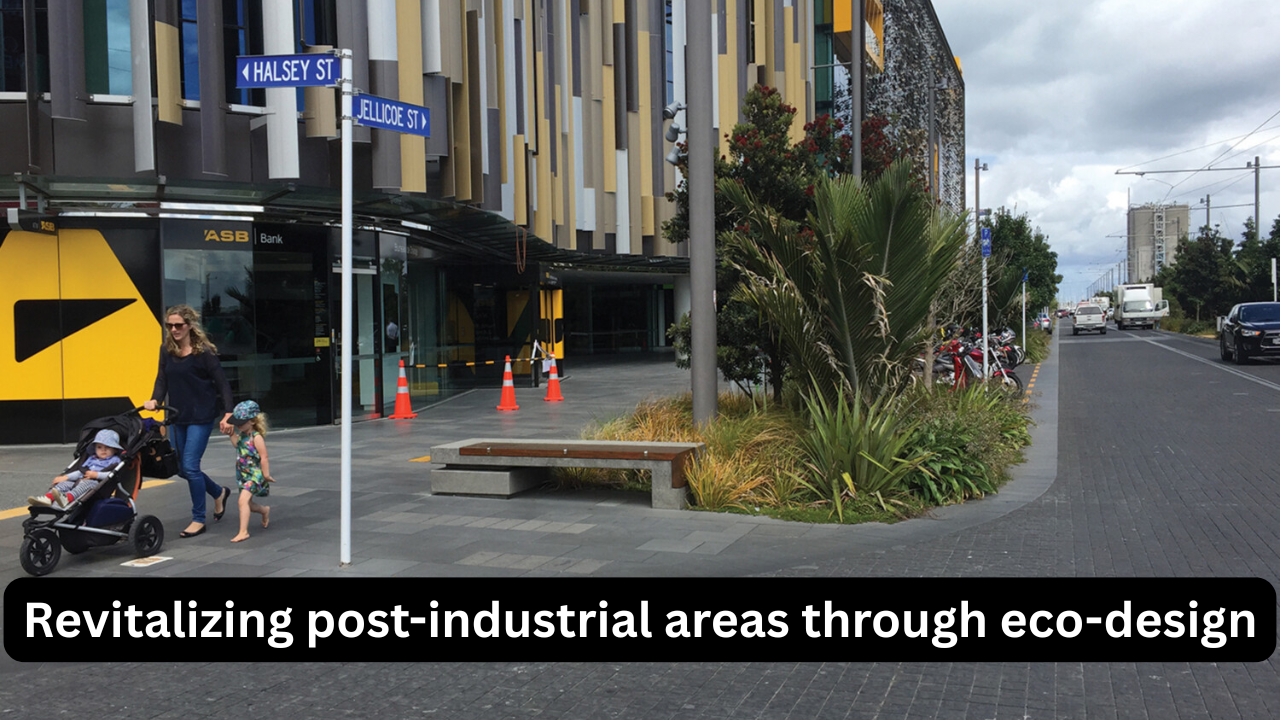
Introduction
Post-industrial areas—once bustling hubs of manufacturing, mining, and heavy industry—often stand today as underused or abandoned zones marked by environmental degradation, economic decline, and social neglect. Revitalizing these spaces through eco-design not only restores their environmental health but also transforms them into vibrant, sustainable, and economically productive communities. Eco-design focuses on integrating ecological principles into urban planning, ensuring that redevelopment is both environmentally responsible and socially inclusive.
Why Post-Industrial Areas Need Revitalization
Post-industrial landscapes are frequently characterized by:
- Polluted soil and waterways from decades of industrial activity
- Derelict buildings and unsafe infrastructure
- High unemployment and low investment in surrounding communities
- Lack of green space and poor environmental quality
The shift towards eco-design offers a chance to repair past damage while preparing these areas for a sustainable future.
Principles of Eco-Design in Revitalization
1. Environmental Remediation
Cleaning up contaminated soil, restoring waterways, and reintroducing native vegetation to repair ecological damage caused by industrial activity.
2. Adaptive Reuse of Structures
Repurposing old warehouses, factories, or shipyards into community hubs, cultural spaces, or business incubators to preserve history while reducing construction waste.
3. Renewable Energy Integration
Installing solar panels, wind turbines, and district heating systems to provide clean power for redeveloped zones.
4. Green Infrastructure
Incorporating green roofs, rain gardens, and permeable pavements to manage stormwater naturally and cool urban microclimates.
5. Community-Centered Planning
Engaging local residents in decision-making ensures projects meet social needs, strengthen identity, and attract long-term investment.
Benefits of Eco-Design for Post-Industrial Area
| Benefit Area | Key Impact | Example Implementation |
|---|---|---|
| Environmental | Restores ecosystems | Riverbank reforestation |
| Social | Improves quality of life | Creation of public parks |
| Economic | Attracts investment | Mixed-use redevelopment |
| Cultural | Preserves heritage | Adaptive reuse of factories |
| Climate Resilience | Reduces flood risk | Wetland restoration |
| Energy Efficiency | Lowers carbon footprint | Solar-powered public lighting |
Global Examples
1. Hammarby Sjöstad, Stockholm, Sweden
A former industrial harbor transformed into an eco-friendly neighborhood with integrated waste-to-energy systems, green transit, and water purification features.
2. Landschaftspark Duisburg-Nord, Germany
An abandoned steel mill redeveloped into a public park that combines industrial heritage with ecological restoration, offering climbing walls, gardens, and cultural events.
3. Toronto’s Waterfront Revitalization, Canada
Brownfield sites along the waterfront have been cleaned up and converted into mixed-use districts featuring green roofs, stormwater wetlands, and public spaces.
Challenges in Eco-Design Implementation
- High Initial Costs – Soil remediation and renewable infrastructure can require substantial investment.
- Technical Complexity – Addressing pollution and structural issues demands specialized expertise.
- Stakeholder Conflicts – Balancing commercial interests with community priorities can be challenging.
- Long Timelines – Large-scale environmental restoration takes years before visible results emerge.
Strategies for Successful Revitalization
- Thorough Environmental Assessments – Identify contamination levels and ecological risks before development.
- Public-Private Partnerships – Share costs and expertise between government, private sector, and NGOs.
- Phased Redevelopment – Begin with small pilot projects to build momentum and attract further investment.
- Cultural Integration – Preserve and highlight industrial heritage through architecture and public art.
- Ongoing Monitoring – Track environmental health and social outcomes to ensure long-term sustainability.
Overview Table
| Aspect | Traditional Redevelopment | Eco-Design Revitalization |
|---|---|---|
| Environmental Focus | Minimal | Core priority |
| Building Approach | Demolition and rebuild | Adaptive reuse |
| Energy Use | Fossil-fuel dependent | Renewable integration |
| Community Involvement | Limited | Strong engagement |
| Ecosystem Impact | Often negative | Positive restoration |
| Long-Term Value | Short-term growth focus | Sustainable resilience |
Conclusion
Revitalizing post-industrial areas through eco-design is not just about cleaning up environmental damage—it’s about reimagining entire districts as resilient, inclusive, and ecologically rich communities. By integrating renewable energy, green infrastructure, adaptive reuse, and community involvement, cities can turn once-polluted landscapes into thriving hubs of life and culture. While challenges remain, the long-term social, economic, and environmental benefits make eco-design a powerful tool for shaping a greener urban future.
3 Quick FAQs
Q1: Why is eco-design better than traditional redevelopment for post-industrial areas?
A: Eco-design ensures environmental restoration, energy efficiency, and community engagement, creating sustainable long-term benefits.
Q2: Can eco-design projects be profitable?
A: Yes—green developments attract investors, raise property values, and reduce long-term operational costs.
Q3: How long does it take to revitalize a post-industrial site with eco-design?
A: Timelines vary, but significant transformations often take 5–15 years depending on contamination levels and project scope.

